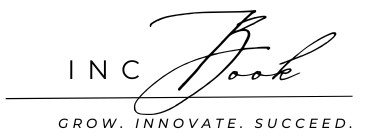So, you’ve got the dream, the hustle, and a killer business idea—but now you need the cash to fuel it. Whether you’re launching a startup, growing your side hustle, or taking your business to the next level, the funding route you choose can make or break your momentum. But with so many options out there—from traditional banks to 21st-century fintech—you need a clear-eyed breakdown of what’s hot, what’s risky, and what actually works. Let’s dive into the ultimate face-off between the top 8 sources of small business funding—starting with two of the most popular (and most misunderstood) contenders.
IncBook: Funding Comparison Calculator
1️⃣ Traditional Bank Loans
Overview:
Classic. Predictable. Often a pain. Traditional bank loans have long been a go-to for small business owners, offering fixed interest rates, longer repayment terms, and a stamp of legitimacy.
Pros:
- Lower interest rates compared to alternative lenders
- Structured repayment schedules for better planning
- May boost your business credit over time
Cons:
- Requires strong credit and financial history
- Tons of paperwork and slow approval times
- Collateral may be required (like your home or business assets)
Best For:
Established businesses with good credit that can afford to wait a few weeks for funding.
Example Scenario:
Imagine a bakery that’s been in business for 5 years and wants to expand to a second location. They have solid revenue and a good relationship with their local bank. A $100K bank loan at 6% over 5 years might be the smartest (and cheapest) route.
2️⃣ Online Business Loans (Alternative Lenders)
Overview:
Think of this as the fast-food version of funding: quick, convenient, and not always the healthiest long-term. Companies like Kabbage, OnDeck, and BlueVine specialize in getting money into your account fast—often in 24 to 72 hours.
Pros:
- Lightning-fast approval and funding
- Easier to qualify even with lower credit
- Great for short-term needs like equipment or inventory
Cons:
- Higher interest rates (often significantly higher)
- Shorter repayment terms
- Less regulated, so terms can vary wildly
Best For:
Businesses that need quick access to cash and can repay quickly—or who don’t qualify for traditional bank loans.
Example Scenario:
A small T-shirt brand gets a huge wholesale order but doesn’t have enough cash to fulfill it. They take a $20K short-term loan from an online lender with a 12-month term to jump on the opportunity, even if the cost of capital is higher.
3️⃣ SBA Loans (Small Business Administration Loans)
Overview:
SBA loans are the government’s way of backing small businesses with big potential. While the funds come from banks or lenders, the SBA guarantees a large portion, reducing the risk for lenders and opening the door for business owners who might not qualify otherwise.
Pros:
- Low interest rates (some of the best available)
- Long repayment terms—up to 25 years for real estate
- Government-backed, so lenders are more flexible
Cons:
- Still involves a lot of paperwork
- Approval process can take weeks or even months
- Personal guarantee usually required
Best For:
Business owners with a solid plan, some business history, and the patience to go through a more rigorous approval process in exchange for favorable terms.
Example Scenario:
A landscaping company wants to buy $150K worth of new trucks and equipment. They apply for an SBA 7(a) loan with a 10-year term and 6.5% interest, offering a manageable monthly payment that doesn’t crush their cash flow.
4️⃣ Business Credit Cards
Overview:
Business credit cards are more than just a convenience—they can act as a flexible line of funding, especially for startups or solopreneurs. With perks like cashback, points, and introductory 0% APR offers, they’re a smart tool when used responsibly.
Pros:
- Instant access to revolving credit
- Can build your business credit profile
- Great rewards and introductory rates
Cons:
- High interest rates after intro period
- Risk of debt piling up if not paid off monthly
- Credit limits may be lower than loans
Best For:
New businesses or solo founders who need flexibility, can manage credit wisely, and want to earn perks while funding expenses.
Example Scenario:
A freelance web developer launches a small agency and puts $5,000 worth of software, ads, and a new laptop on a business credit card with 0% APR for 12 months. As long as they pay it off before the year’s up, they’ve essentially scored an interest-free loan.
5️⃣ Friends and Family
Overview:
It’s personal, it’s emotional, and it can be powerful. Borrowing from friends or family can be one of the fastest and most flexible ways to get your business off the ground—without jumping through credit score hoops or filling out endless forms.
Pros:
- Flexible repayment terms (or even no interest)
- Fast access to funds
- No credit check or collateral required
Cons:
- Can strain relationships if expectations aren’t clear
- No legal protections unless documented
- May come with emotional pressure or strings attached
Best For:
Very early-stage startups or founders with a strong personal network and clear communication skills.
Example Scenario:
An entrepreneur wants to launch a food truck and needs $30K to buy a used truck and cover startup costs. Their uncle agrees to lend them the money at 0% interest with a five-year informal repayment plan. They draft a simple written agreement to keep things professional and clear.
6️⃣ Crowdfunding
Overview:
Platforms like Kickstarter, Indiegogo, and GoFundMe allow you to raise money directly from your future customers or supporters. It’s part funding, part marketing, and part community-building—and when done right, it can generate serious buzz and capital.
Pros:
- No repayment required if rewards-based (Kickstarter-style)
- Great way to test demand before launching
- Builds a loyal fanbase early on
Cons:
- All-or-nothing funding models on some platforms
- Takes serious effort to market and promote
- If you fail to deliver, reputation can take a hit
Best For:
Consumer-facing products, creative projects, or startups with a compelling story or viral potential.
Example Scenario:
A team designs a sleek, eco-friendly travel mug and wants to raise $50K for their first production run. They launch a Kickstarter campaign, offering early supporters a big discount. Within 30 days, they raise $80K and build a 1,000-person email list of future customers.
7️⃣ Venture Capital (VC)
Overview:
High risk, high reward. Venture capital is startup rocket fuel—money from firms or investors betting big on your potential for serious growth. In return, they take equity (ownership) and often a seat at the table.
Pros:
- Large amounts of capital available
- Access to expert guidance and strategic partnerships
- No repayment—investors win only if you win
Cons:
- You give up ownership and control
- Intense pressure to scale fast
- Not suitable for small or lifestyle businesses
Best For:
High-growth startups in tech, biotech, or other scalable industries that need millions in funding and are ready to play the big leagues.
Example Scenario:
A startup building AI-driven maritime routing software gets $2 million in VC funding to expand its dev team, market the platform globally, and prep for a Series A round. In return, the VC firm gets 20% equity and a board seat.
8️⃣ Grants (Free Money—but Not Easy)
Overview:
Grants are basically business funding unicorns—free money with no strings attached, offered by government agencies, nonprofits, or corporations. They’re competitive and paperwork-heavy, but the payoff can be sweet if you win.
Pros:
- You don’t have to repay a cent
- Can enhance credibility with investors or banks
- Often supports specific industries, demographics, or innovations
Cons:
- Extremely competitive
- Long application process
- Often comes with usage restrictions and reporting requirements
Best For:
Businesses working on social impact, innovation, clean energy, or owned by underrepresented groups that align with the grant’s mission.
Example Scenario:
A woman-owned business developing solar-powered fishing gear wins a $50K environmental innovation grant from a nonprofit. The funds help them build a prototype and apply for a second round of funding from a larger foundation.


